VANILLA MARKET UPDATE – NOVEMBER 2018
The 2018 vanilla campaign opened officially in Madagascar on October 15th tinged with both optimism (lower prices and vastly improved quality) and uncertainty (very slow and late flowering for 2019). There are now over 140 accredited exporters of vanilla in the country, with many capital hungry collectors trying to make the jump to exporter. Most have scant experience in the preparation and export of vanilla and will most likely exit from the trade as the most recent crisis abates. Some will go on to become legitimate vanilla exporters. Such is the nature of a market that has been plagued with highly inflated vanilla bean prices, crop shortfalls and deteriorating quality standards; all of which have combined to severely impact worldwide demand which was enjoying a global renaissance prior to the most recent crisis. As vanilla producing regions attempt to recover from the brink of irrelevance, we believe we have turned the corner on what has arguably been the worst crisis the global vanilla market has ever experienced. As always, it will be the world’s largest producer of vanilla, Madagascar, that leads the recovery which will by no means be a smooth ride. First, a brief summary of alternative growing regions.
Papua New Guinea – Digging In.
PNG continues to cement its role as the world’s number two producer of vanilla beans and will most likely see its production increase further in 2019. Gourmet (Food Service) PNG vanilla (Tahitensis type) has been readily accepted in European and North American markets, whereas Asia and Australia absorb most of the industrial grade PNG vanilla. We believe that PNG must further enforce quality standards and stem the flow of smuggled vanilla which crosses the Indonesian border. Smuggled PNG vanilla tends to be immature and only partially cured, only to be finished in Indonesia. The result is a very different and arguably inferior vanilla product compared to what is cured in PNG and exported directly from PNG. It also sows confusion as the smuggled vanilla is often referred to as Indonesian Tahitensis. In order to ensure continuity and consistency of quality, which is critical for market acceptance over the long term, we believe PNG must take full control over its vanilla trade which could add over 250mt to the 2019 global vanilla production.
Uganda – Hard lessons learned?
Ugandan vanilla has been mired in a quality slump for years despite its potential to be one of the highest quality vanillas in the world. Hampered by continued early picking and the lack of any long-term strategy results in a region that punches well below its weight on the global vanilla stage. A government initiative early in 2018 to help the industry has mostly fallen flat. Rumors of partially cured vacuum packed beans being exported to Asia are discouraging. However, the current crop, the smaller of 2 annual harvests, is showing some signs of improvement. The word is out in Uganda that Madagascar quality has improved so international buyers will be more demanding and less likely to accept the substandard and unstable qualities of past harvests. If this trend continues, the larger mid-year harvest could be bountiful as the current flowering is strong. We may see Uganda finally surpass the 100mt level in 2019 but it is still far too early to pronounce on this.
Indonesia – Cuts, cuts and more cuts.
Indonesian vanilla production, when smuggled PNG vanilla is removed from the equation, seems focused primarily on cuts or lower grade vanilla, both EP (early picks) and conventional grades. There is always a market for these lower grades, however, as the global vanilla crisis recedes prices will have to be further discounted. Perhaps the Indonesian market will be encouraged to produce higher quality as the vanilla landscape becomes more competitive. Unfortunately, as long as the smuggling from PNG continues unabated this eventuality is unlikely. We see Indonesia continuing to supply mostly lower grade vanillas in 2019 with some potential upside on production from new plantings in 2019, but unlikely to yield much more than 100mt.
Comoros – Steady as she goes.
Although production of bourbon vanilla for 2018 in the Comoros fell short of expectations due to weaker than expected flowering, the quality has improved significantly over 2017. Although the Comoros is a challenge to work with from a logistical point of view, they consistently produce a high- quality bourbon vanilla unrivaled by any other region. A weaker Euro against the USD will make vanilla from the Comoros more competitive in 2018/19. Still well below 100mt, production is expected to rebound in 2019. Furthermore, the duopoly which has existed between two primary exporters for many years seems to be loosening with several new exporters appearing on the local vanilla scene.
French Polynesia – Fading fast.
Once one of the world’s great vanillas, vanilla from French Polynesia, the original vanilla Tahitensis, has been relegated to extreme niche status. A small cabal of exporters exerts a stranglehold on local production which has stagnated for years. Stratospheric pricing discourages any growth outside of the local tourist market. In our opinion, it will be extremely difficult for French Polynesian Vanilla to recover from this self-inflicted damage they have imposed on their vanilla brand. Unless there is a severe change in strategy, they are destined to go the same way as Mexican Vanilla. A tragedy when you consider that the origins for Tahitensis and Planifolia vanilla no longer hold any relevance in the global vanilla trade.
Madagascar – Recovery and damage control
One could say the 2018 Madagascar vanilla crop represents the beginning of the end of the global vanilla crisis, which has gripped the market the last 2-3 years. Prices have fallen modestly and quality has vastly improved over 2017. For the most part the crop is mature and vanillin yields are up significantly over last season. Many factors have contributed to the turnaround. The question is; will the trend continue? Some important facts to consider:
- Demand and prices for vanilla started to fall early in 2018 resulting in a surplus of 2017 crop somewhere between 200 – 300mt.
- Buyers sensing the market turn did not pre-finance the 2018 crop anywhere near the extent of 2017.
- The demand for quick cured vanilla has dropped considerably. This was a huge source of pressure on the green vanilla campaign in 2017.
- Due to the quality issues of 2017 and the return to Madagascar of many rejected lots of vanilla, there was a more concerted effort not to harvest the green vanilla too early.
- Finally, with national elections imminent and the political uncertainty that comes with it, the Malagasy currency, the Ariary, is at an all- time low against the US dollar helping to keep vanilla prices stable.
All of these factors have contributed to the current stable market of high-quality vanilla at reduced prices over 2017. The crop size is expected to be between 1500 – 1700mt which is better than expected thanks to the crop maturity. Yet there remains a disconnect between international buyers and the Madagascar vanilla exporters and the collectors that supply them.
Many buyers expected lower prices in 2018 and are holding back in the hopes this will materialize in the months ahead as unsold vanilla accumulates on the ground. Prices are still at historically very high levels and there is plenty of room on the downside. Three months ago, this may have been the correct strategy, however a very lackluster flowering season for 2019 thus far has changed sentiment on the ground in Madagascar. Unless there is a dramatic turnaround in flowering in the weeks ahead the demand for 2018 vanilla could increase considerably. Heavy rains in August, September and much of October have hampered the flowering. Lately there has been improvement but most regions are reporting far fewer flowers per vine than last year. Flowering is already late, and even if there is a strong recovery one can say with relative certainty that the 2019 crop will not produce the same quality or quantity as 2018. We are by no means suggesting we are heading towards higher prices, we are simply pointing out that recovery of the vanilla market both in Madagascar and globally, will not be without some setbacks.
We have always maintained that buyers ultimately control the direction of any vanilla market both in terms of quality and price. Already the lack of pre-financing and reduced demand for quick cured vanilla has had a direct positive impact on the market. Furthermore, we believe buyers should avoid working with companies who cannot finance their own operations, even when tempted by very attractive prices. This is the fuel that feeds the fire. The same can be said of the demand for quick cured vanilla which puts huge pressure on green beans prices and in our opinion goes against the better interest of the Madagascar vanilla communities, depriving them of much needed employment during the curing and preparation season for vanilla.
Although the exporters and collectors of Madagascar are often blamed for speculation, poor quality control and lack of market discipline, it is often the international buyers who are enabling this behavior. Recently there has been an excellent example of this. Very early in this campaign (June/July) long before the vanilla is even close to being ready, a large quantity of vanilla beans by way of pre-financing from a large experienced global buyer, was exported from the North.
How this vanilla was even allowed to leave the country when the opening date for exports was October 15th remains a mystery. The market reacted and there was a spike in the price of green vanilla on ground. Ultimately, the vanilla was deemed of poor quality and was returned to origin for re-treatment. Thankfully this season this incident was an isolated one and the market calmed soon thereafter however the logic behind such an ill-advised buying strategy is incomprehensible.
Conclusion – In the driver’s seat.
In our last report, issued in May of this year, we stated several things that had to happen in order for the vanilla market in Madagascar to continue its corrective course towards more sustainable prices and improved qualities. Early picking of green beans was kept under control thus improving the size and quality of the 2018 crop. Pre-financing and the demand for quick cured vanilla were kept in check. The Presidential elections have not produced any societal unrest and hopefully things will remain that way through the 2nd and deciding round on December 19th. The vacuum packing of partially cured vanilla is still a big problem but not as widespread as previous seasons. These are all very positive developments. A state of normalcy has returned to the market and we believe buyers must do their part to keep the momentum going in the right direction.
We cannot predict the unforeseen but a disciplined approach to buying must be maintained as we believe there will be sufficient vanilla to satisfy world demand in 2019, even if the next Madagascar crop comes up a little short. Ignore the alarmists who try to excite the market each time a cyclone develops in the Indian Ocean. Support the vendors who can finance their own operations and share the risk. Resist price offers that do not appear realistic because chances are, they’re not. Encourage vendors to supply traditionally cured vanilla beans that benefit the vanilla communities of Madagascar. The world- wide vanilla market has suffered terribly over the past three years. The opportunity to reverse course and return to a more sustainable long-term approach rests squarely in the hands of international buyers. We are cautiously optimistic that the worst is behind us.
Aust & Hachmann (Canada) Ltd

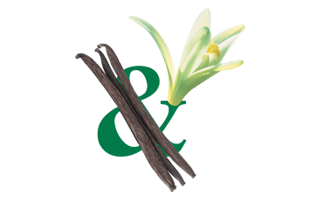
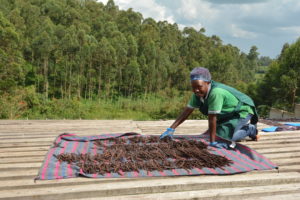
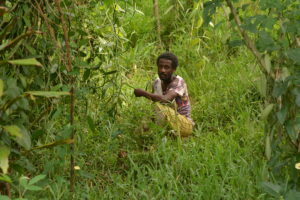
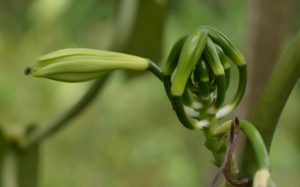
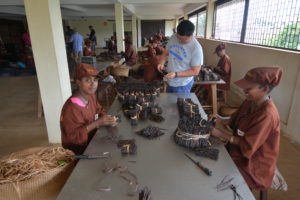
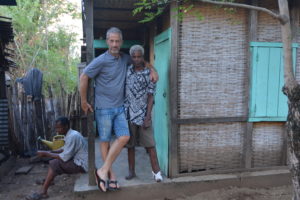
Recent Comments